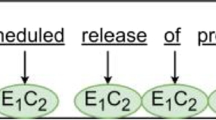Abstract
Explanation knowledge expressed by a graph, especially in the graphical model, is essential to comprehend clearly all paths of effect events in causality for basic diagnosis. This research focuses on determining the effect boundary using a statistical based approach and patterns of effect events in the graph whether they are consequence or concurrence without temporal markers. All necessary causality events from texts for the graph construction are extracted on multiple clauses/EDUs (Elementary Discourse Units) which assist in determining effect-event patterns from written event sequences in documents. To extract the causality events from documents, it has to face the effect-boundary determination problems after applying verb pair rules (a causative verb and an effect verb) to identify the causality. Therefore, we propose Bayesian Network and Maximum entropy to determine the boundary of the effect EDUs. We also propose learning the effect-verb order pairs from the adjacent effect EDUs to solve the effect-event patterns for representing the extracted causality by the graph construction. The accuracy result of the explanation knowledge graph construction is 90% based on expert judgments whereas the average accuracy results from the effect boundary determination by Bayesian Network and Maximum entropy are 90% and 93%, respectively.
Similar content being viewed by others
References
Trnkova J, Theilmann W. Authoring processes for Advanced Learning Strategies. Telecooperation Research Group, TU Darmstadt, and SAP Research, CEC Karlsruhe, Germany, 2004.
Lehmann J, Maes S, Dirkx E. Causal models for parallel performance analysis. In Fourth PA3CT-Symposium, Edegem, Belgium, Sept. 13-14, 2004.
Murphy K. Active learning of causal Bayes net structure. Technical Report, University of California, Berkeley, USA, 2001.
Pechsiri C, Kawtrakul A. Mining causality for explanation knowledge from text. Journal of Computer Science and Technology, 2007, 22(6): 877–889.
Carlson L, Marcu D, Okurowski M E. Building a Discourse-Tagged Corpus in the Framework of Rhetorical Structure Theory. Current Directions in Discourse and Dialogue, van Kuppevelt J, Smith R (eds.), Kluewer Academic Publishers, 2003, pp.85–112.
Mani I, Pustejovsky J, Spawar B S. Introduction to the special issue on temporal information processing. ACM Transactions on Asian Language Information Processing, March 2004, 3(1): 1–10.
Csiszar I. Maxent, mathematics, and information theory. In Proc. the 15th Int. Workshop on Maximum Entropy and Bayesian Methods, Santa Fe, USA, Jul. 31-Aug. 4, 1996, pp.35–50.
Mitchell T M. Machine Learning. The McGraw-Hill Companies Inc. and MIT Press, Singapore, 1997.
Khoo C S G. Automatic identification of causal relations in text and their use for improving precision in information retrieval [Ph.D. Dissertation]. School of Information Studies of Syracuse University, 1995.
Marcu D, Echihabi A. An unsupervised approach to recognizing discourse relations. In Proc. the 40th Annual Meeting of the Association for Computational Linguistics Conference, Philadelphia, USA, Jul. 6-12, 2002, pp.368–375.
Inui T, Inui K, Matsumoto Y. Acquiring causal knowledge from text using the connective markers. Journal of the Information Processing Society of Japan, 2004, 45(3): 919–933.
Miler G A, Beckwith R, Fellbuan C, Gross D, Miller K. Introduction to Word Net. An Online Lexical Database, 1993.
Walker M, Joshi A, Prince E. Centering in Naturally Occuring Discource: An Overview in Centering Theory of Discourse. Oxford: Calendron Press, 1998, pp.1–28.
Chang D S, Choi K S. Causal relation extraction using cue phrase and lexical pair probabilities. In Proc. IJCNLP, Hainan Island, China, Mar. 22-24, 2004, pp.61–70.
Girju R. Automatic detection of causal relations for question answering. In Proc. The 41st Annual Meeting of the Association for Computational Linguistics, Workshop on Multilingual Summarization and Question Answering-Machine Learning and Beyond, Sapporo, Japan, Jul. 7-12, 2003, pp.76–83.
Li W, Wong K-F, Yuan C. A model for processing temporal references in Chinese. In Proc. Workshop on Temporal and Spatial Information Processing at the 39th Annual Meeting of the Association for Computational Linguistics (ACL 2001), Toulouse, France, Jul. 9-11, 2001, pp.33–40.
Grote B. Representing temporal discourse markers for generation purpose. In Proc. Discourse Relations and Discourse Markers Proceedings of the Workshop, Coling (ACL 1998), Montreal, Quebec, Canada, 1998.
Han B, Lavie A. A framework for resolution of time in natural language. ACM Transactions on Asian Language Information Processing, March 2004, 3(1): 11–32.
Smith, J G, Duncan A J. Elementary Statistics and Applications: Fundamentals of the Theory of Statistics. Mc Graw-Hill Book Company Inc., New York, London, 1944.
Sudprasert S, Kawtrakul A. Thai word segmentation based on global and local unsupervised learning. In Proc. NCSEC 2003, Chonburi, Thailand, 2003, pp.1–8.
Chanlekha H, Kawtrakul A. Thai named entity extraction by incorporating maximum entropy model with simple heuristic information. In Proc. IJCNLP 2004, Hainan Island, China, Mar. 22-24, 2004, pp.1–7.
Pengphon N, Kawtrakul A, Suktarachan M. Word formation approach to noun phrase analysis for Thai. In Proc. SNLP 2002, Hua Hin, Thailand, May 9-11, 2002, pp.277–282.
Chareonsuk J, Sukvakree T, Kawtrakul A. Elementary discourse unit segmentation for Thai using discourse cue and syntactic information. In Proc. NCSEC 2005, Bangkok, Thailand, Oct. 27-28, 2005, pp.85–90.
Berger A L, Della Pietra S A, Della Pietra V J. A maximum entropy approach to natural language processing. Computer Linguist, 1996, 22(1): 39–71.
Fleischman M, Kwon N, Hovy E. Maximum entropy models for Frame Net classification. In Proc. the 2003 Conference on Empirical Methods in Natural Language Processing, Sapporo, Japan, 2003, pp.49–56.
Author information
Authors and Affiliations
Corresponding author
Additional information
Supported by the Thai Research Fund under Grant No. MRG5280094.
Rights and permissions
About this article
Cite this article
Pechsiri, C., Piriyakul, R. Explanation Knowledge Graph Construction Through Causality Extraction from Texts. J. Comput. Sci. Technol. 25, 1055–1070 (2010). https://doi.org/10.1007/s11390-010-9387-0
Received:
Revised:
Published:
Issue Date:
DOI: https://doi.org/10.1007/s11390-010-9387-0




